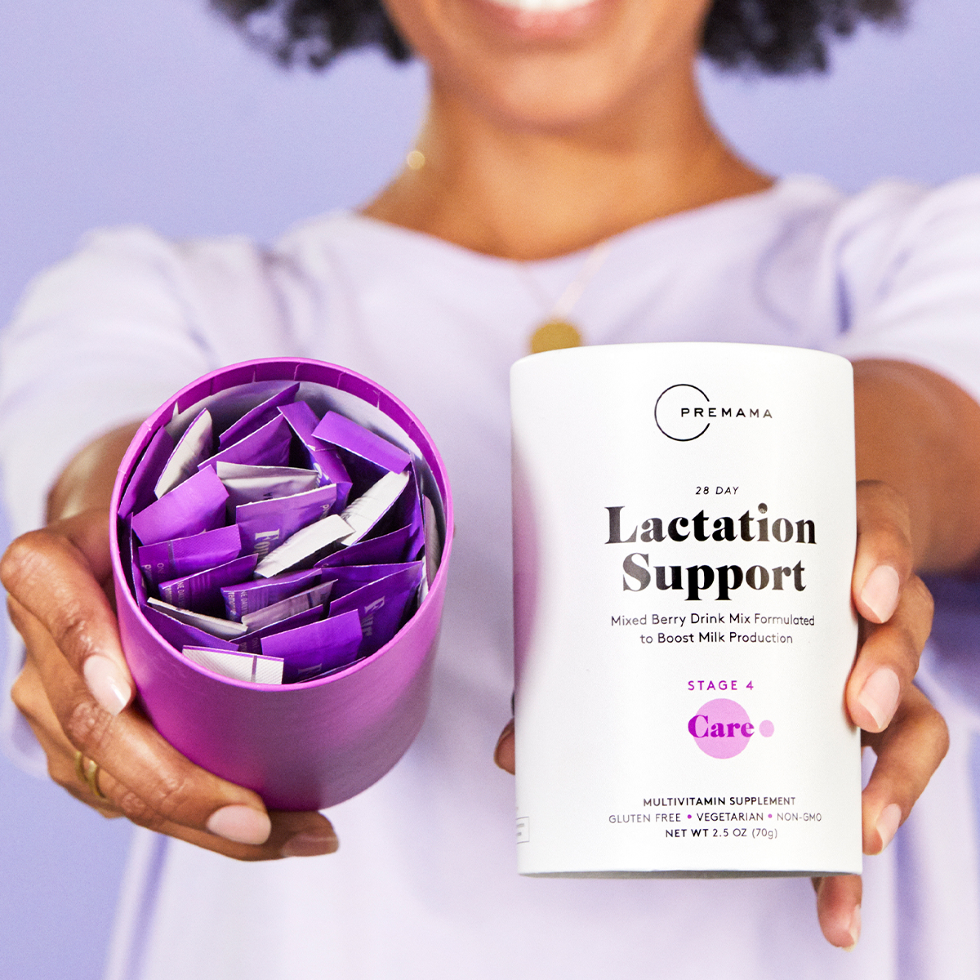
Breastfeeding is a learned process. That means it’s 100% expected to have questions about breastfeeding, like if it’s normal to have pain and how long to feed for. It’s to be expected that new moms will need information as breastfeeding unfolds after birth. Along with some loving care and guidance, and a good dose of trust in the process and your body, it’s vital to have information about what to expect in the first few days of breastfeeding, especially since so much changes that first week—from birth to colostrum to your milk coming in!
This article provides an overview of what happens over the course of the first week of breastfeeding (and beyond), but the keys to remember are:
- Keep baby close with skin-to-skin contact.
- Nursing every 1.5 to 2 hours is typical.
- Rooting, fist-to-mouth and lip-smacking are baby’s key hunger signs.
- Check diaper output: Generally 3 to 5 solid diapers and 5 to 6 wet diapers per day is normal.
- Your baby’s latch shouldn’t be painful. Get help if needed from a certified lactation consultant.
Here’s a breakdown of the first week of breastfeeding: What’s normal + what to do if you’re having trouble.
How to get breastfeeding off to a good start
1. Breastfeed in the first few hours after birth
Babies are often ready to start eating within 45 minutes to an hour of being born. If you are able, this is a great time for that first feeding. There is evidence that nursing in the first hours leads to longer nursing duration. Babies are learning as soon as they are born, so give them the chance to learn to nurse. If you aren’t able to, or if something goes wrong, don’t worry—with help, almost all babies can learn to latch later on.
Don’t forget to ask your nurse or provider for help with the first latch, and ask to see a lactation consultant or counselor if available.
2. Maintain skin-to-skin contact
Unless you or your baby has a medical condition that requires immediate attention, it’s important to spend a good few hours with your baby skin-to-skin directly after birth. Even babies born via C-section can be placed in a mother’s arms immediately after birth. If you can’t do skin-to-skin, a partner or family member might be able to. And skin-to-skin has major benefits moving forward, as well. Any time spent doing skin-to-skin is valuable, whether or not you are breastfeeding.
3. Check your early latch
Many babies (especially ones born to mothers who didn’t have pain medication) will crawl up to the breast and latch on themselves, known as the breast crawl. Numerous studies have shown the importance of these first few hours of breastfeeding. Babies are most alert and primed to nurse in these post-birth hours.
Breastfeeding tips for days 1 to 3
1. Nurse frequently
For the first few days after birth, expect your baby to nurse very frequently. There is absolutely no schedule yet. If you are in a hospital, having your baby room-in with you can help since you’ll be closer and can respond to their hunger cues when they start. Keep your baby skin-to-skin with you for most of the day. This way, anytime your baby looks for the breast, it will be right there. Rooting, head bobbing, fist sucking, mouth fluttering—these are all
signs your baby is hungry.
2. All hail colostrum
During the first three days, you’ll produce a special kind of early milk called colostrum. It’s small in quantity, but rich in vitamins, proteins, antibodies and antiviral agents. It’s your baby’s first inoculation. It also acts as a laxative and helps your baby clear out their first poop (meconium).
3. Keep an eye on the baby’s weight loss
It is normal for breastfed babies to lose a bit of weight in the first three days of life—5% to 7% is within the normal range. Part of this is the passage of the first poop and other fluids from birth.
You likely don’t need to supplement your breastmilk. In fact, your baby’s stomach is about the size of a marble right now, so feeding a few ounces in a bottle will most likely make your baby spit up. The colostrum your body produces is small in amount for a reason—it’s just the right amount for your baby’s stomach to hold.
4. Address latching issues as early as you can
What if your baby is not latching? Some babies have trouble latching in the first few days. If this is the case, get some help from a lactation consultant right away.
In the meantime, keep your baby skin-to-skin,
hand express your colostrum (pumps don’t work as well in these first few days before your milk “comes in”) and feed your baby the colostrum with a small spoon or a medicine dropper.
Breastfeeding tips for days 3 to 5
1. Prepare for the arrival of milk letdown
Sometime between the third and fifth day after birth, your milk will become more abundant. It can often happen suddenly but is sometimes more gradual. Some women just feel fuller and might notice their baby swallowing more milk (not everyone can hear a baby swallow, but that doesn’t mean the baby isn’t getting milk!). Others become quite engorged when their milk comes in, which can be a challenge in itself.
2. Know that overfilling, or engorgement, is possible
The key is to make sure your baby is deeply latched on well and to nurse frequently to empty your breasts and prevent them from getting engorged.
3. Try hand-expressing breast milk
If your breasts are so full that your nipples become flattened, your baby may have trouble latching on. Hand expressing a little milk to soften the nipple, or trying a technique called reverse pressure softening, can make the nipple more pliable and make latching easier.
4. Gently massage your breasts
Get some help with these techniques if necessary. If you are so engorged that your milk isn’t flowing, a gentle massage can help. Cold packs or chilled cabbage leaves placed over the breasts between feedings can also be helpful to relieve breast discomfort.
5. Do a diaper check
Soon after your milk comes in, your baby’s poops will transition to a greenish-brownish color, and will take on a mustard yellow color soon after. Wet diapers will become more abundant as well.
Breastfeeding tips for days 5 to 7
Once you’ve gotten over the hump of the first few days, you might be starting to find a groove with breastfeeding. Your baby will still be nursing very frequently, about 10 times in 24 hours. Some will have a slightly longer stretch (though not always at night!), but most will need to nurse every two hours or so.
1. Learn your baby’s hunger cues
Once your milk is in and you know that your baby is gaining weight, you can let some longer stretches happen, but remember to always nurse when your baby shows cues like rooting, head bobbing and fist sucking; and always check with your pediatrician first. Even a baby making light sucking motions is a cue to nurse.
2. Know that schedules vary
Some babies will seem to have an erratic eating schedule, wanting to nurse every hour for a few hours, and then being passed out for a few hours after that (cluster feeding). All of it is normal.
3. Continue checking diapers
Babies generally have three to five solid diapers per 24 hours. The poops should be at least the size of a quarter, yellow in color and sometimes seedy in texture. Variations in color are normal too. Some babies will poop after every feeding, and some will consolidate the poops more. Pee diapers vary, but five to seven wet diapers per day is normal.
4. Check baby’s weight
Diapers only tell half the story of how much milk a baby is getting. The most reliable test is a weight check (placing baby on the same scale each time if possible, wearing no clothes or diaper).
5. Get help if you need it
It can take up to two weeks for a baby to get back to their birth weight, but by the end of the first week,
a baby should be gaining rather than continuing to lose weight. If your baby isn’t gaining weight, get help right away!
6. Supplement if needed
If your baby is losing weight, you may need to try supplementing your milk with formula or your own pumped milk. Your child’s pediatrician can guide you here.
7. Know that breast tenderness should subside
Nursing should be relatively pain-free by the end of the first or second week. Some mild tenderness when your baby first latches is within the spectrum of normal, but pain that is severe, lasts more than a few seconds, lasts between feeds or is accompanied by broken or cracked skin, that is not normal and you may need help fixing your infant’s latch.
8. Ask for help when you need it
If you have any issues or concerns with breastfeeding, get help sooner rather than later because these problems only tend to get worse with time. Often all that you need is a quick adjustment to your latch or positioning. Some moms and babies need a little more help. Ask your pediatrician for recommendations for a lactation consultant.
Got more questions about postpartum healing and the fourth trimester? Motherly created the perfect postpartum wellness birth class. Learn more about navigating this wild new world by signing up for the digital class here.
Breastfeeding tips for beyond the first week
1. Relax + snuggle
Your baby will want to nurse a lot and be near you. Now is the time to clear your schedule and let yourself rest and snuggle with your infant. Lots of new moms have trouble with this because they are used to getting things done and feeling independent. But this time is brief and you will thank yourself later for taking the time to rest and establish breastfeeding.
2. Get support
Remember, you don’t have to do everything alone. Get help! Your partner, your family, your neighbors—accept all offers of help. Let others keep house and feed you so you can rest and nurse.
3. Find your people
Do you love breastfeeding? Hate it? Feel overwhelmed? All these feelings are normal, and it’s normal to feel all of them all at once. Check in with yourself too to determine if you’re experiencing symptoms of postpartum depression or postpartum anxiety.
Once you have recovered from birth and breastfeeding is established, join a local breastfeeding support group. Meeting other breastfeeding moms will help you feel normal. Plus, more concerns come up after that first week, and it’s great to have the wisdom and support of other mothers.
A version of this post originally appeared on June 30, 2018. It has been updated.
Sources:
Nakao Y, Moji K, Honda S. et al. Initiation of breastfeeding within 120 minutes after birth is associated with breastfeeding at four months among Japanese women: A self-administered questionnaire survey. Int Breastfeed J 3, 1 (2008). doi: 10.1186/1746-4358-3-1
Looking for more support along your breastfeeding journey? These products can help!
Earth Mama organic nipple butter
 Great for moisturizing all dry, rough skin (it can even work as a lip balm!), apply it before and after breastfeeding to ease chapping and irritation. Even better, it’s Non-GMO Project Verified and certified USDA organic with no petroleum, parabens or lanolin, so there’s no need to wipe it off before feeding your babe.
Great for moisturizing all dry, rough skin (it can even work as a lip balm!), apply it before and after breastfeeding to ease chapping and irritation. Even better, it’s Non-GMO Project Verified and certified USDA organic with no petroleum, parabens or lanolin, so there’s no need to wipe it off before feeding your babe.
B.D.A. Maternity + Nursing Bra

It’s the perfect everyday, at home, on-the-go, anytime nursing bra you’ll actually want to wear. With four-way stretch that hugs your changing shape, it’s the ultimate seamless, comfortable experience for breastfeeding and pumping mothers.
Premama postnatal vitamin and lactation drink mix bundle

Beyond offering nutrients to support your overall health, this bundle of postpartum wellness includes multis and lactation support drink mix that are formulated to alleviate postnatal depletion, ease postpartum depression, improve energy and cognition and ensure your breast milk is fortified with essential nutrients to boost nutrition.
We independently select and share the products we love—and may receive a commission if you choose to buy. You’ve got this.

 PARENTING TIPS
PARENTING TIPS PREGNANCY
PREGNANCY BABY CARE
BABY CARE TODDLERS
TODDLERS TEENS
TEENS HEALTH CARE
HEALTH CARE ACTIVITIES & CRAFTS
ACTIVITIES & CRAFTS


